Just because we are leaving the summer season doesn’t mean the wildflowers are going away. The wildflowers in Durango and the surrounding area are still blooming in full force. These late-season flowers are stunning and bound to captivate anyone on the trail. Durango is home to a wide array of Colorado flora. When hiking Durango locally at Oxbow Park and Preserve or on the Colorado Trail you might spot some wildflowers. If you don’t know what to look for here is a quick wildflower guide to refer to on your next hike.
Discover the Stunning Wildflowers Along the Colorado Trail and Oxbow.
Colorado Trail Wildflowers
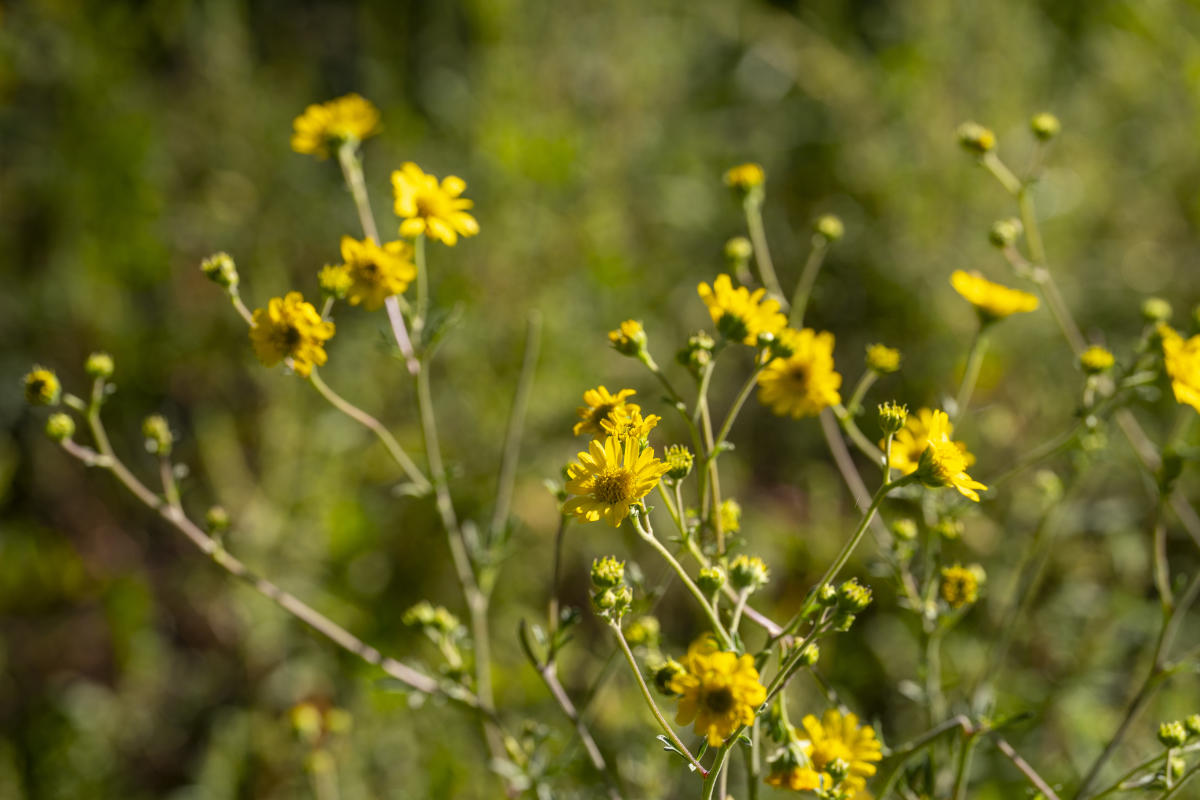
Bahia (Hymenothrix dissecta)
One of the many Colorado Trail wildflowers is the Bahia. This gorgeous daisy-like wildflower is found in the Southwestern United States and Mexico. Its vibrant yellow petals radiate from a golden center. The Bahia flower thrives in dry, sandy soil with full sun. Blooming typically occurs from late spring to early fall, with peak season occurring mid-summer. These hardy flowers attract pollinators so be careful not to get stung!
Dark-haired Four O'Clock (Mirabilis melonotricha)
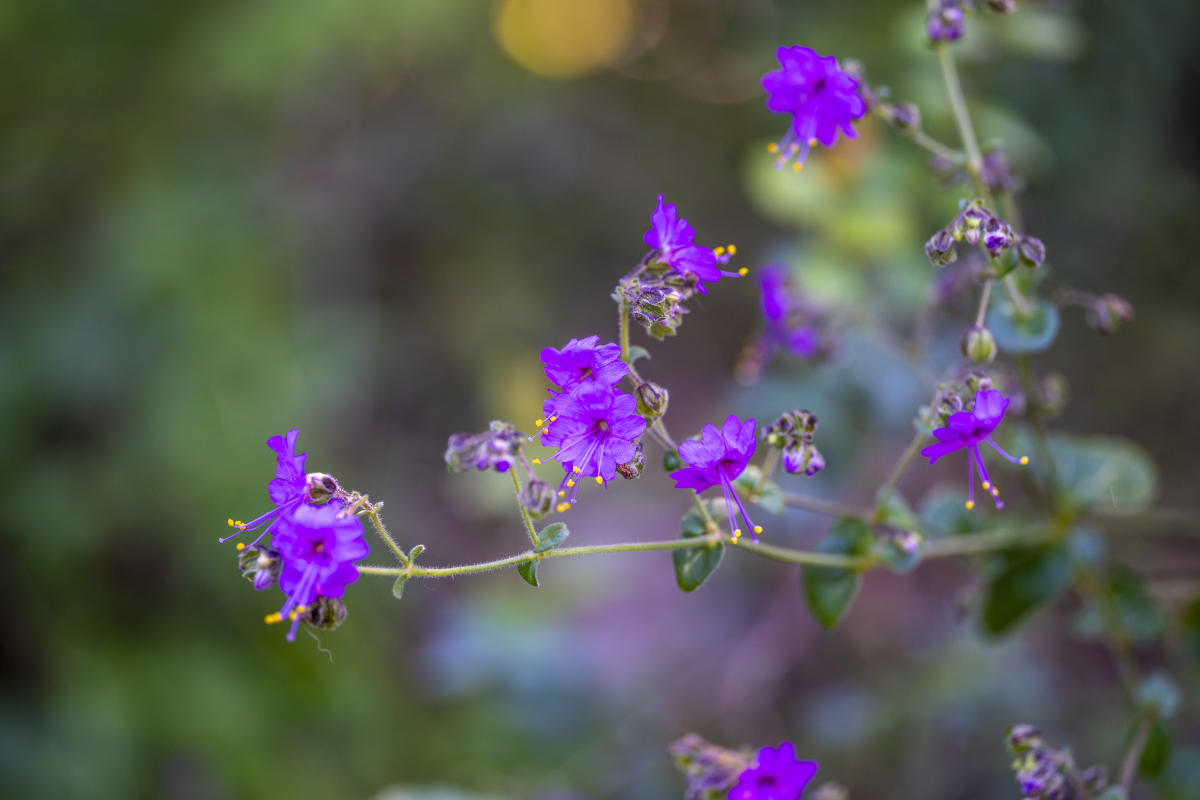
The Dark-haired Four O’ Clock flower is a striking desert wildflower native to the Southwest. This flower's dark, hair-like structure on its stem and leaves lend to its name and appearance. The Dark-haired Four O’ Clock opens in the late afternoon or early evening revealing colors running from pink to deep magenta. This perennial plant thrives in rocky, arid environments. Keep an eye out for it when hiking places like desert slopes or canyons.
Silvery Lupine (Lupinus argenteus)
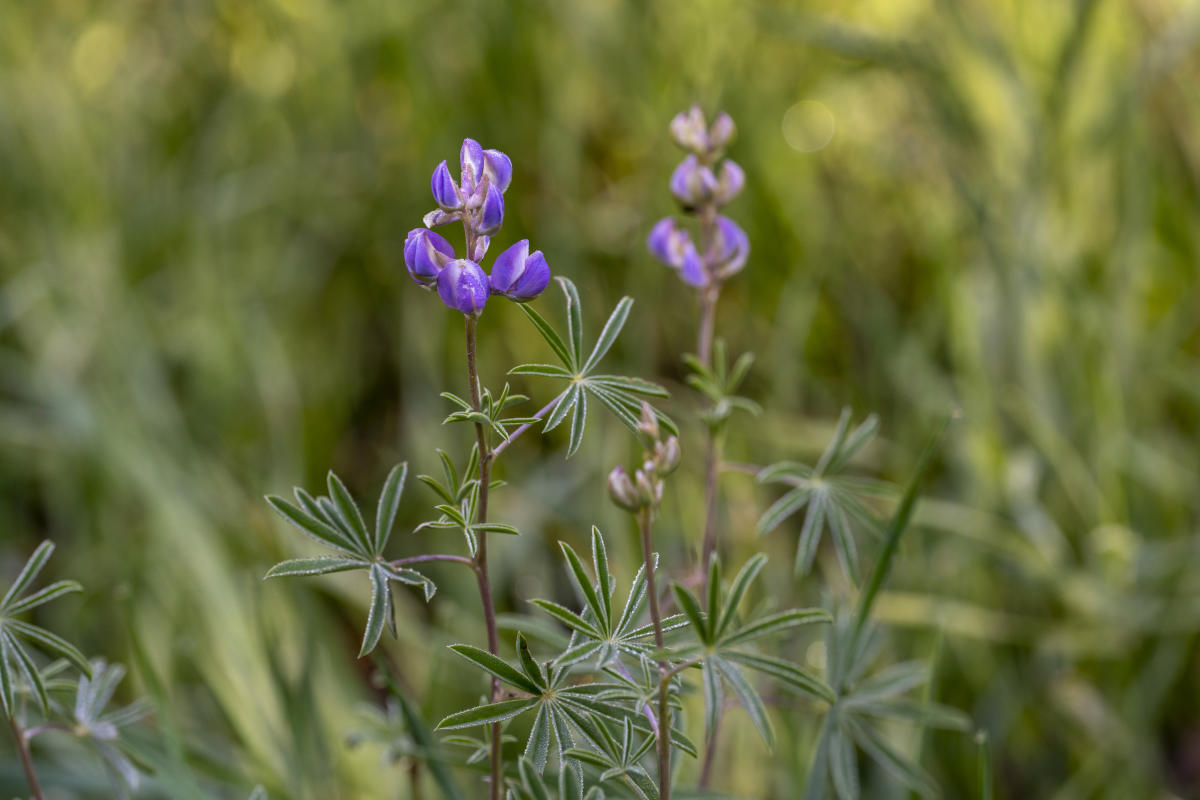
Silvery Lupine has a magical quality with its soft, silvery leaves and stems that shimmer in the sunlight. This contrasted with the tall spikes of blue and violet flowers that can stand out against the dry, rugged landscape where it thrives. Commonly found in grasslands and mountain slopes, like much of the scenery on the Colorado Trail. This lupine wildflower often grows in clusters that spread across the landscape. Not only is it pretty to look at, but the Silvery Lupine also helps regulate the soil by maintaining nitrogen. Look out for this breath-catching beauty during late spring, early summer, and early fall.
Lanceleaf Aster (Symphyotrichum lanceolatum)

Like the Western Aster, the Lanceleaf Aster is known for its daisy-like look and petals that range from lavender to bright purple. When identifying the Lanceeaf Aster along the trail look for narrow, lance-shaped leaves along its stem. Found typically in meadows, wetlands, and streams, this aster thrives in both moist and dry soils. This species of aster blooms from late summer through fall providing a burst of color. Don’t pick or damage these flowers since they are an important source of nectar for pollinators.
Yarrow (Achillea millefolium)
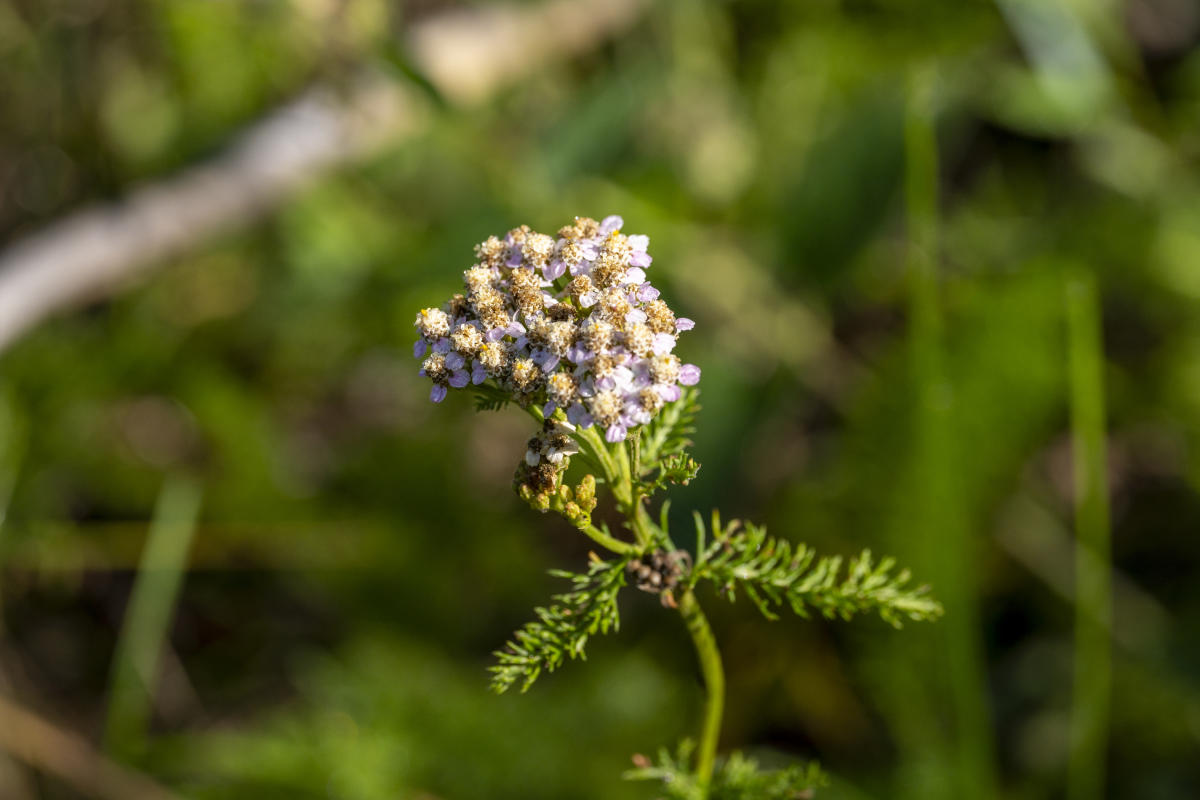
The common Yarrow flower is characterized by its cluster of tiny white or pale pink flowers that sit atop a long feathery stem. This hardy, aromatic perennial blooms from late spring to early fall in meadows, grasslands, and along roadsides. Traditionally used in herbal medicine, the yarrow has anti-inflammatory and wound-healing properties. The plant's leaves and flowers can be used to make tea and tincture that helps treat cuts, fevers, and digestive issues. Look out for the Yarrow on your next hike in Durango!
Bigelow's Tansy-aster (Dieteria bigelovii)

Like the many other Aster flowers on the Colorado Trail, the Bigelow’s Tansy-aster has daisy-shaped flowers. Its delicate, yet striking appearance is enhanced by the pale purple to lavender petals that surround its bright yellow center. The thin, vibrant peaks stand in contrast to the arid Southwest desert where the plant thrives. Similar to the other asters in the area, the Bigelow’s Tansy-aster blooms from summer through fall. This aster is one of the many gorgeous native plants in Durango.
Hairy Golden Aster (Heterotheca villosa)

Unlike a lot of the Asters covered already, the Hairy Golden Aster has bright yellow petals that surround a golden center. This plant is known for its fuzzy, hair-covered stems and leaves which lend to its name. Native to the Western United States, this drought-tolerant wildflower thrives in the dry, rocky soils of Durango. You might be able to spot these growing on the trail or the side of the road.
Waxy Aster (Herrickia glauca)
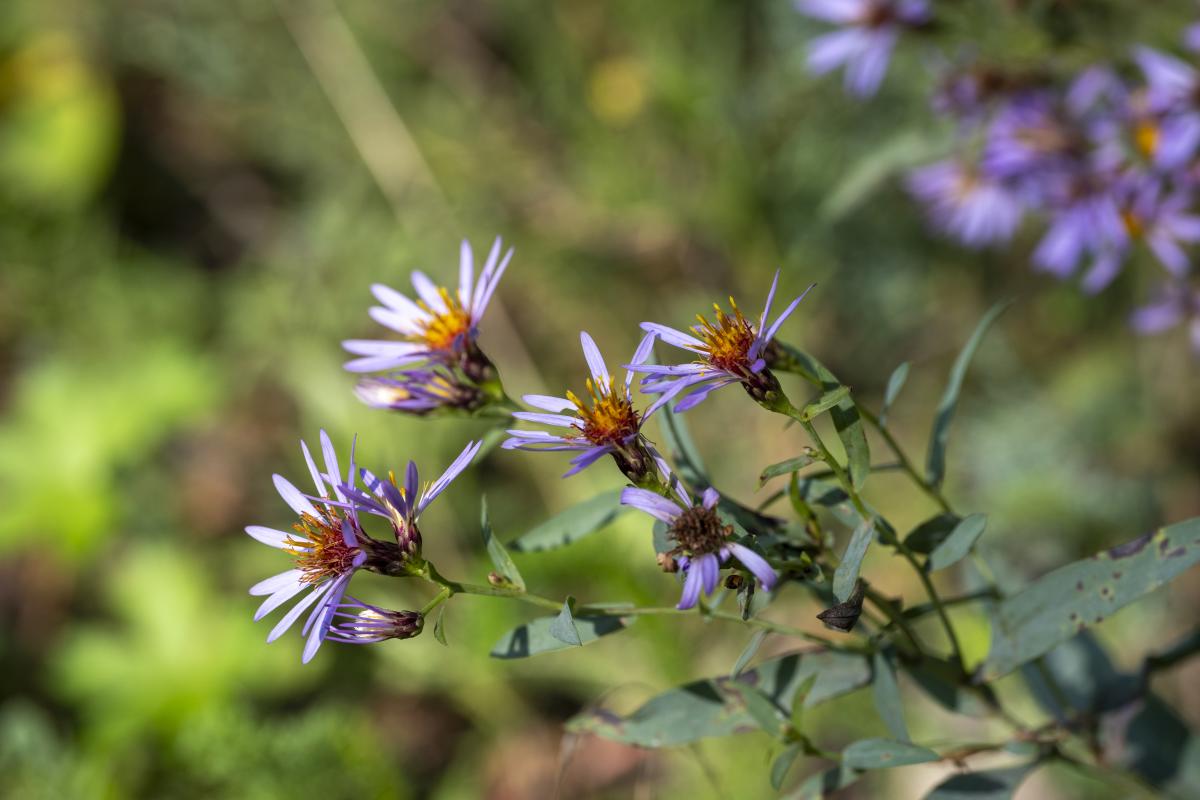
The Waxy Aster, also known as the white heath aster, is easily identified by its small, colorful blooms and waxy-textured leaves. This aster might look like many others but what makes it so special is the smooth, shiny surface of the flower leaves. This wildflower blooms typically in late summer to fall with petals that range from white to soft lavender. As the plant matures its bright yellow center will fade to a reddish pink. Look for the Waxy Aster in dry, open habitats like prairies and roadsides.
Tufted Geranium (Geranium caespitosum)
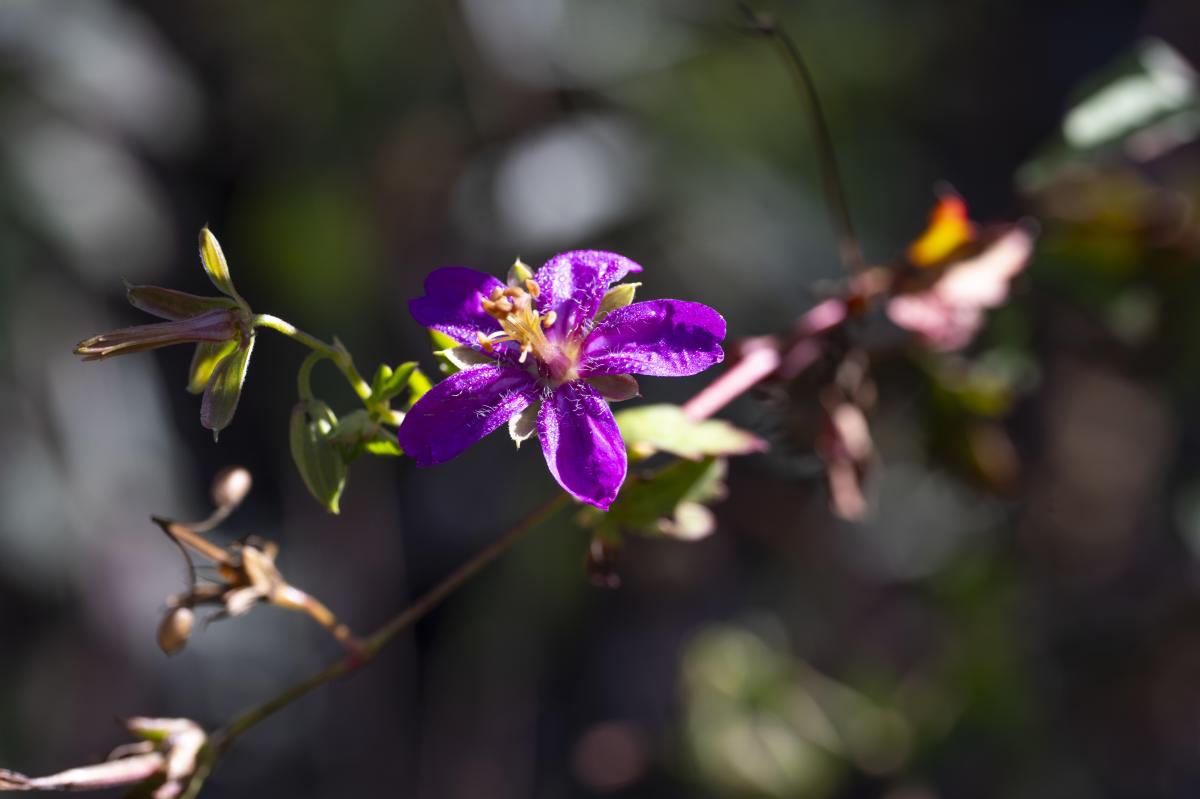
Tufted Geraniums are admired for their beautiful clusters of delicate, five-petaled flowers. Along many trails, you can spot this wildflower by looking for blossoms of tight, charming bunches that range from pale pink to lavender. Native to the western U.S., this plant is found in woodlands and high elevations. Its deep-lobed leaves create a lush green base that contrasts with the vibrant flowers.
Oxbow Wildflowers
Rabbitbrush (Ericameria nauseosa)

Even in town, you can find gorgeous wildflowers growing. A great example of flora you might see at Oxbow is the Rabbitbrush. Rabbitbrush is known for its distinct clusters of bright yellow flowers that bloom in late summer to fall. These dense, golden blooms sit atop slender, gray-green stems which contrast its soft foliage. This wildflower can appear to look more like a bush with silvery stems and leaves. Rabbitbrush is important wildlife since it helps pollinators and provides cover for small animals.
Prairie Aster (Symphiotrichum falcatum)
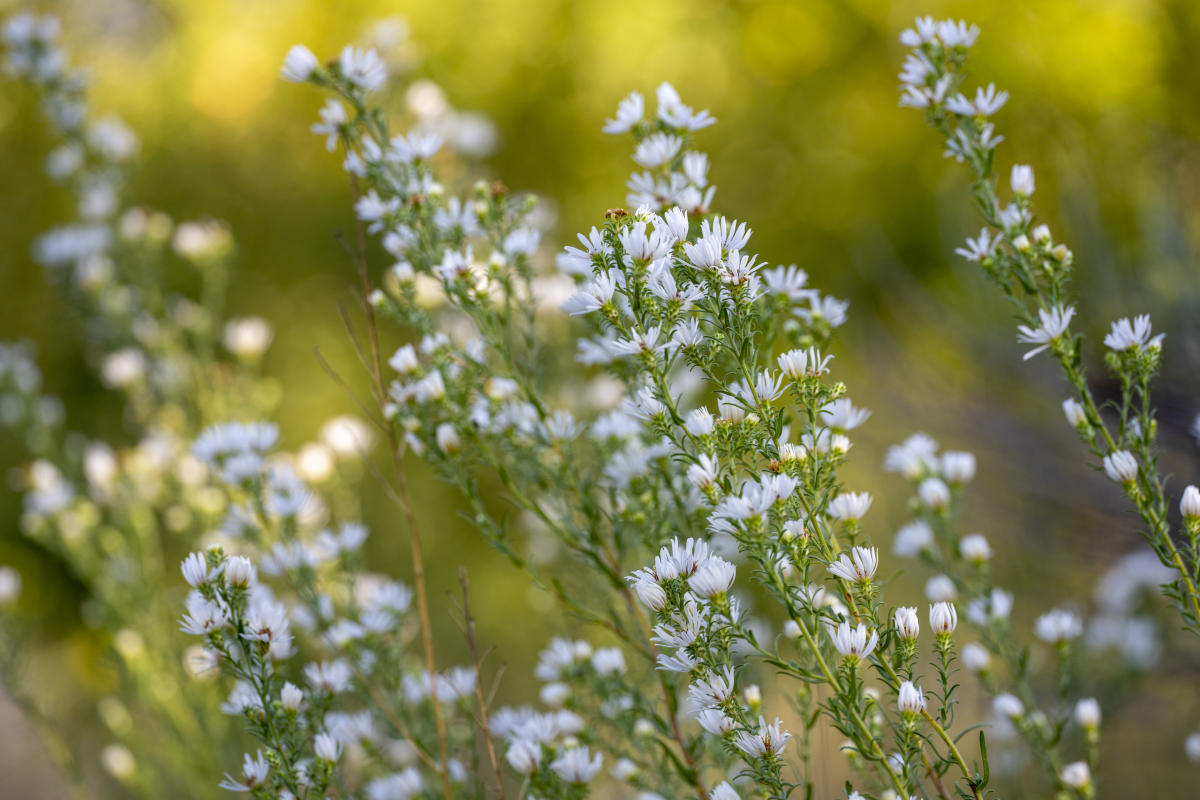
Another Oxbow wildflower is the Prairie Aster which is celebrated for its hardy nature and vibrant purple blooms. This plant has adapted to the challenging conditions of prairies and open grasslands which provide the dry soil and full sun it needs. Their small, daisy-like flowers and rich purple petals surround a yellow center. Unlike other purple petaled asters, the Prairie Aster tends to have deeper purple blooms which can help identify it.
Conclusion
The Durango region is a hidden gem for wildflower enthusiasts looking to catch them before winter creeps in. These wildflowers offer a stunning variety of blooms that provide color even in the fall months. Explore the Colorado Trail or local trails and experience the rich diversity of the local flora. From delicate white fields of spreading daisies to bold yellow clusters of Rabbitbrush, every trail has a unique floral tapestry. Lace-up those boots and experience firsthand the beauty of these local wildflowers!
Don't forget to check out Wildflowers of the Colorado Trail by Karen Marie Hwang, who provided consultation for this blog.






